[As usual - best read in the App or browser due to the length]
In part 11 I talked about how heating sake gets you a drink that has varied nose, somewhat like red wine or whiskey. That’s one reason why I tend to be less interested in the ginjo and daiginjo sakes with all their polishing because that polishing removes the bits that add interesting scents to the drink when heated. Hence I prefer the less polished Junmaishu(純米酒) instead. It’s also why I prefer the traditional Kimoto and Yamahai brewing methods as opposed to the standard one today that uses artificial sources of lactic acid. These variations are all accentuated when you heat your sake.
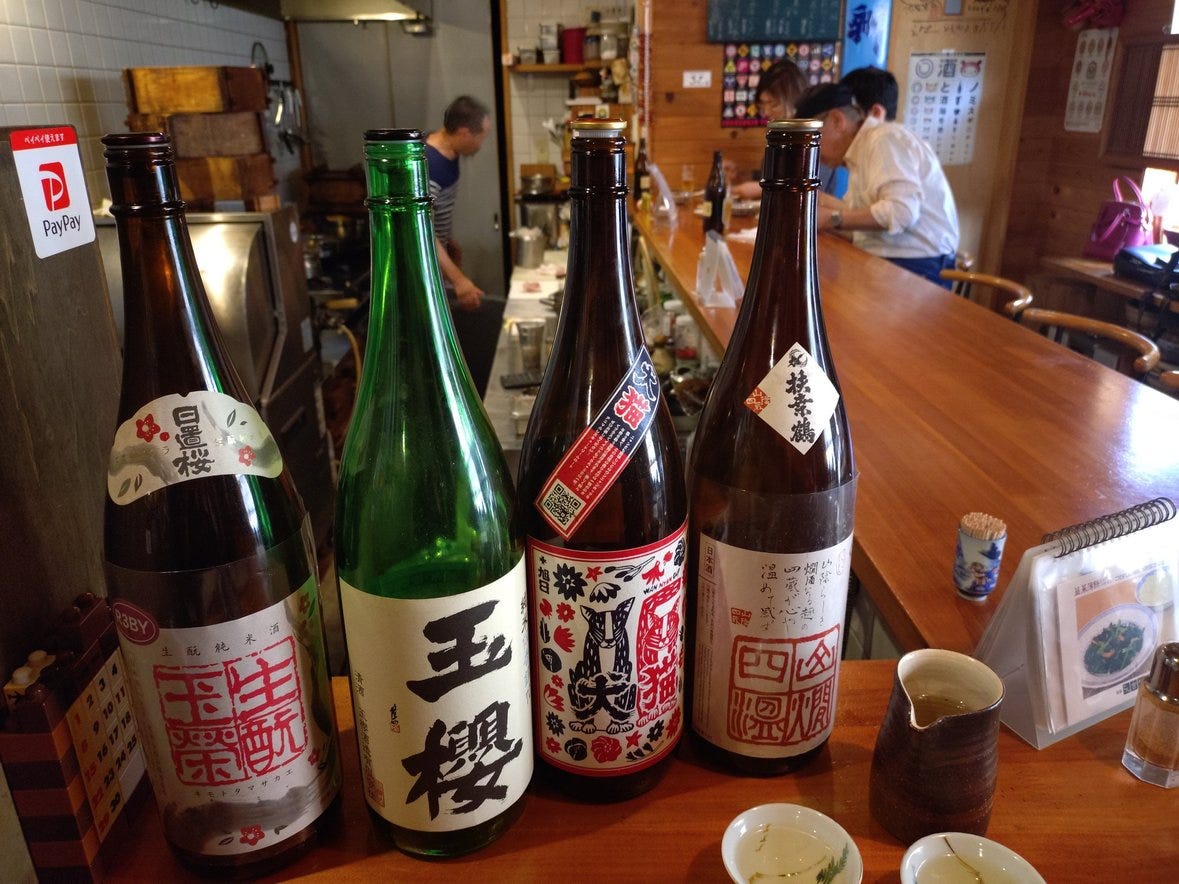
But it is worth noting that not all sake is good heated, and in fact, hot sake has a poor reputation amongst some (many?) Japanese because of this. Indeed back when I first lived in Japan in the early 1990s I had a couple of poor experiences (i.e. hangovers and worse2) involving hot sake at cheap izakayas and figured that the hot sake thing was just a trick to try and hide the tastes of some otherwise not very nice sake. That may well have been true then and there, but a quarter century later I’ve learned to appreciate the good hot sake.
Note: A simple way to avoid bad sake is to drink it in places where you can see the bottles or at least where they give details about the sake on offer. If you go to a place that offers “Nihonshu” (日本酒 ) without any more details then you could be in trouble. Mind you the same applies for wine drinkers and places where the wine selections are “red wine”and “white wine” - of which here are plenty in Japan.
What also interests me is that Kanzake is absolutely not a nationwide thing. In Tohoku - Iwate and Miyagi for sure, maybe other prefectures - for example, very few places offer kanzake and few kuras seem to expect their sake to be drunk as kanzake3. On the other hand in western Japan it’s very common - sake kuras on the Japan sea side of Japan from Yamaguchi to at least Toyama often have sakes that are specifically designed to be drunk warm, as do kuras in Hiroshima and parts of Shikoku.
Kanzake is also different in that it appreciates older sake. Most cold sakes tend to be drunk, like white wine, a couple of years after they have been brewed. However just as with red wine, kanzake drinkers appreciate older vintages as well. This almost always means that the sakes are brewed using the kimoto or yamahai methods and that they are, as I said before, generally junmai i.e. with no added alcohol. One of the results of aging junmai is that it tends to turn brown and look a little whiskey-like.
But not all sakes age the same. It turns out that the propensity to turn brown is more pronounced in sweeter sake. I’ve drunk a ten year old sake from Yamaoka Shuzo (山岡酒造) that was barely tinted yellow and not readily distinguishable in color from one that was just a couple of years old, but this was a very dry (超辛口) sake. On the other hand, the sake I pictured in part 1 that looked like soy sauce is a very sweet one.
Either way the nose and taste of sake when warmed is very different to what it is when drunk cold or at room temperatures. What is even more fun is that the taste changes with the temperature as different elements come into play and often the sake makers will list multiple temperature ranges that they recommend the sake be drunk at.
Suitable Sake to Drink Hot
Generally speaking any junmaishu will work and as noted above, almost always a kimoto or yamahai brewing method is recommended, though not 100% required, and older sakes (5+ years) tend to be more interesting. It doesn’t matter if it is genshu, namazake etc., though if it is genshu it is worth asking if it is recommended to add a little water. If at an izakaya or similar they may well just add it anyway.
[Also to avoid the hangover from dehydration, do drink lots of water with your sake. Sake is generally slightly more alcoholic than wine, starting at about 15% and going up to 20% for a genshu - and sometimes just a little over. If you just drink sake for an evening and don’t drink water you will suffer.]
One of the interesting things though is that you can also have nigori (cloudy) sakes hot. Some (such as the one in the picture below) are intended to be drunk that way and have writing on the label (燗にごり- kan nigori) saying so. Others (e.g. the slightly brown nigori from post 1) may not explicitly say so, but it is known that they will be good that way because the kura specializes in sakes intended to be drunk warm
And there’s nothing wrong with drinking a kimoto or yamahai syle junmai ginjo or junmai daiginjo sake warm, but generally speaking those are better drunk nurukan (slightly warmed) as opposed to anything hotter. The problem with ginjo and daiginjo is that often their nose is better experienced cold and is less pleasant when heated, however that’s not a universal rule. This Yamahai Junmai daiginjo, for example, is great hot as the website says:
With an understated take on the generally floral, fruity daiginjo style, this is an exceptionally versatile food sake. Paired with formal kaiseki cuisine for example,it shows a chameleon-like capacity to complement each course.
Extra depth and complexity lent by the traditional yamahai brewing style means it drinks superbly warm - rare for a junmai daiginjo,
Generally speaking (and I’ll have a part 4 to go into more detail) you will get a better sake experience from a place with lots of sake, and a better heated sake experience from a place that is familiar with hot sake. There’s absolutely nothing wrong with buying sake at a supermarket - I do it - but it is worth starting your experience with sake from an expert. And again while buying it from a liquor store and heating it at home is fine, you’ll probably do better starting at a restaurant/izakaya etc. that specializes in it. For izakayas and the like, a good sign that the place knows about sake is seeing a lot of different sake bottles displayed and a drink menu with many options. A good, almost mandatory, sign that the place knows about heating sake is seeing if it has a water bath near / on the counter. If you check customer reviews and photos this is often obvious from them, if not then casting an eye along the entire counter as you enter is a good idea.
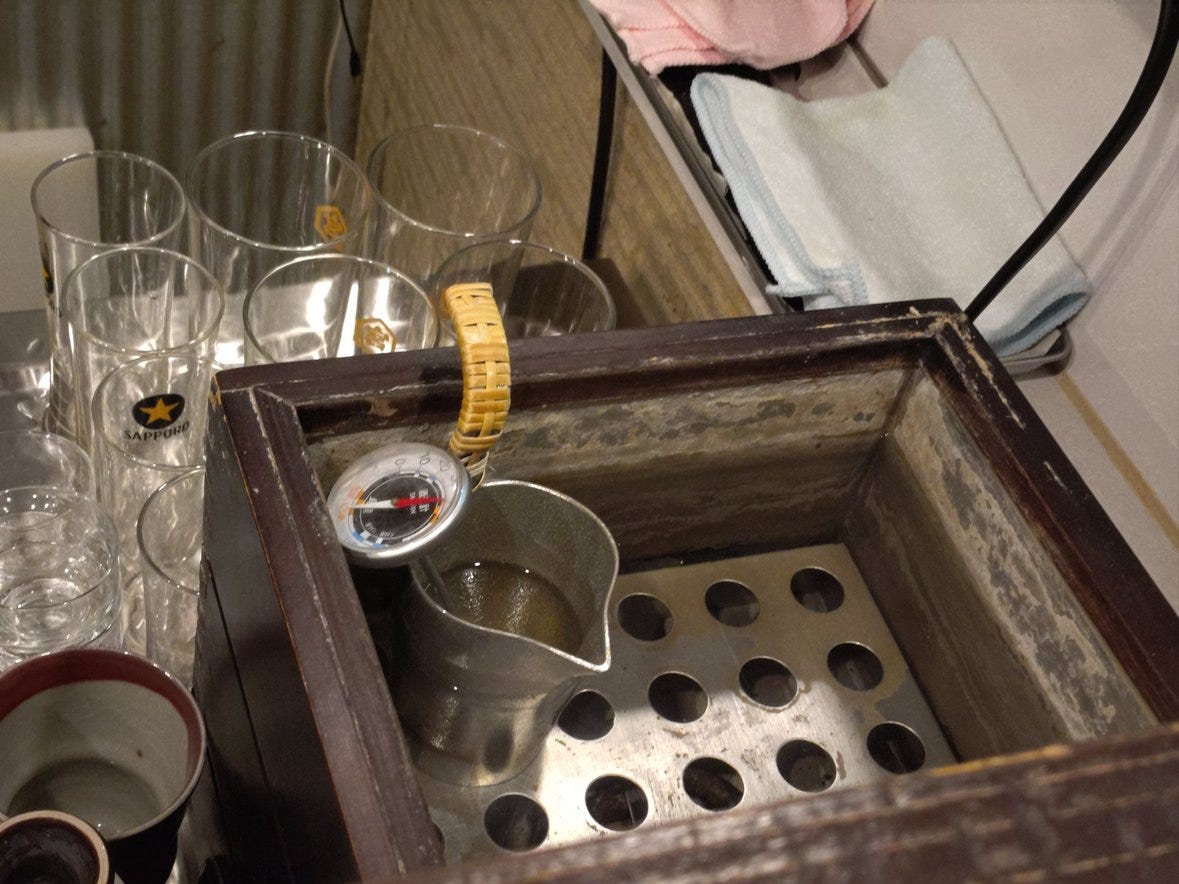
Often such a place will be able to recommend suitable sakes and will serve at suitable temperatures for the sakes chosen. Explaining that you are curious and then throwing yourself to their mercy (osusume) is generally a great way to find styles that you like and so on.
That leads us on to…
Kanzake and Food
While there’s no law that says you have to drink sake with food, that’s the customary Japanese way and it is particularly customary for kanzake. However, some food goes better with it than others, just as some food goes better with red wine rather than white wine. In fact, on the whole, the same sorts of food that goes well with white wine tends to be the same food that goes well with cold sake and, likewise, food that goes well with red wine is also food that goes well with kanzake.
The main exception to that is that Yakiniku tends to be a waste because the smell of smoke etc. from the meat overpowers the nose of the sake. However if you have Yakiniku in a place with good ventilation then go ahead and drink kanzake with it, assuming the place offers (see above) a variety of sakes rather than just a vague 日本酒 and passes the test of having the water bath visible. A similar argument applies to yakitori and kushiyaki places - if you smell the smoke then don’t drink hot sake there - but in my experience most such places with a good sake selection also have good ventilation so the smoke doesn’t go over the diners.
What may surprise is that a lot of Chinese (influenced) food goes extremely well with kanzake. Gyoza and similar dim sum sorts of things are good - see the kan nigori picture above. Also good are slightly spicy foods - but not so spicy that you burn your tastebuds!
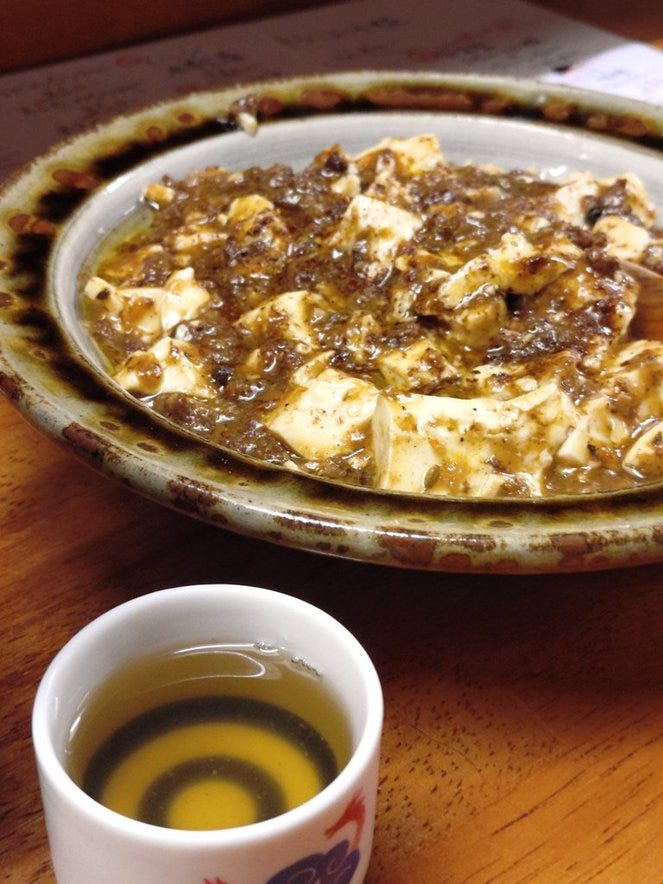
Finally tempura is often excellent accompanied by kanzake as are other deep fried foods as are the winterish oden and nabe (and shabu shabu)
If you are at home then you can enjoyably drink kanzake with totally non Japanese food. Tagines, for example, can be excellent when accompanied by kanzake as are good meaty stews and pasta dishes like ragu. In fact if you normally drink red wine with it, try it and you are unlikely to be badly misled. I have yet to see one, but I expect that there are some French and Italian restaurants in Japan that offer kansake as well as red wine, and if there aren’t there should be :)
The (o)Kanban ((お)燗番)
Because sake changes its nose so much with heating, traditionally Japanese sake serving establishments had a person whose job was to ensure that the customers had their sake heated the correct amount. That person was called the Kanban (or Okanban with a honorific) and these people still exist, although these days often they are running their own sakaba or izakaya rather than being the employee.
The kanban’s job is to provide you the sake at the right temperature and they may have different ways to go about it. Traditionally they would pour tiny amounts to sniff and taste, but these days many use a thermometer to measure the sake temperature and that’s fine. However the old ways persist and (see the future part 4 where I name names) a good okanban uses his (or her, in fact often her) years of experience heating different sakes to get the right temperature for that particular sake.

They may have their own quirks as well, such as preferring to have the sake heated hotter than they want to serve it and then cooling it or (for genshu) pouring in a little cold water right at the end to get the temperature just right.
One thing I have noticed is that many English language writers about sake seem to think that if the sake gets over about 55-60°C then it’s too hot. My observation of expert okanban and others, such as well known toji of various kuras at sake events, is that this is not the case. It seems to me that they often heat the sake up to 65°C or even 70°C and then they may let it cool before serving - or they serve it really hot and let it cool in the ceramic or pewter carafe/jug (tokkuri - 徳利) while you drink it.
All this adds to the pleasure of drinking sake. If you like, it’s all very zen and mystical - you can’t drink the same sake twice - and that’s not entirely wrong. But you can drink nearly the same sake many times and revel in the differences. Indeed when you take your time drinking your warmed sake, you can appreciate how the sake changes in taste as it cools down.
Heating at Home
When you go to an izakaya you will see that they often heat the sake in a plain metal carafe or jug and then pour it into a ceramic one (or perhaps a pewter one) to serve. If you want to impress your friends and family that’s a fine thing to copy. You can spend a very enjoyable time poking around in flea markets, antique stores and the like looking for interesting tokkuri and cups (choko - 猪口 or sakazuki - 盃). You can of course also visit high end department stores or use Amazon or your online retailer of choice to buy new ones. It’s a lot of fun, and usually it’s quite cheap though it can get pricey if you go for new top of the range stuff.
Oh and a couple of brief notes on choko and sakazuki. The classic white ceramic with a blue circle originated at competitive sake tasting events where the blue is intended to help the taster evaluate the color and clarity of the sake. Now it has just become a widespread tradition for all kinds of sake choko. Sakazuki (the flatter saucer like cup) are supposed to be better for kanzake appreciation because you get a better nose. On the possibly negative side the wide shallow vessel means that the sake cools down in it quicker so if you want to enjoy your sake warmer you have to drink it fast.
Likewise you can go all in and buy a posh water bath and thermometer and so on. But you don’t need to. All you really need is a saucepan, a jug and any food thermometer.
The above is my kanzake set. Yes we splurged (ha ha) on a ¥1,500 (US$10) jug and about the same again for the thermometer. But that’s all it takes. Put cold water in the pan. Heat it for a few minutes. Put the sake in the jug in the water. Wait a couple of minutes and check what the thermometer says. When the thermometer is at the right temperature take the jug out of the water and serve - either direct or via that tokkuri you found in a fleamarket somewhere.
The most important thing though is to have fun and enjoy the sake - kanpai!
Sake - 日本酒 (part 1 of several)
This is going to part 1 of a series. I realized that if I put everything I want to in one post it will be the size of a book. As it is, this is still best viewed in the app/browser rather than direct from email
Don’t drink multiple toasts to Her Majesty with hot sake. Really do not recommend. Don’t drink them to His Majesty or anyone else come to think of it.
Though Akabushuzo (赤武酒造) in Morioka makes a sake that we convinced a local izakaya to heat up when we visited Morioka earlier this year. It was just fine hot, despite the heating method being nuking it in a microwave oven




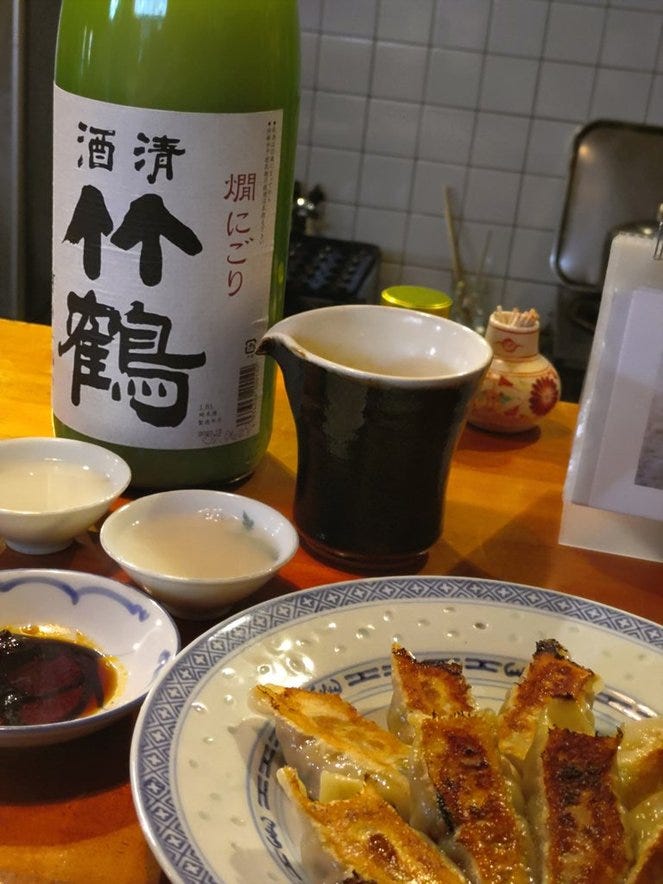
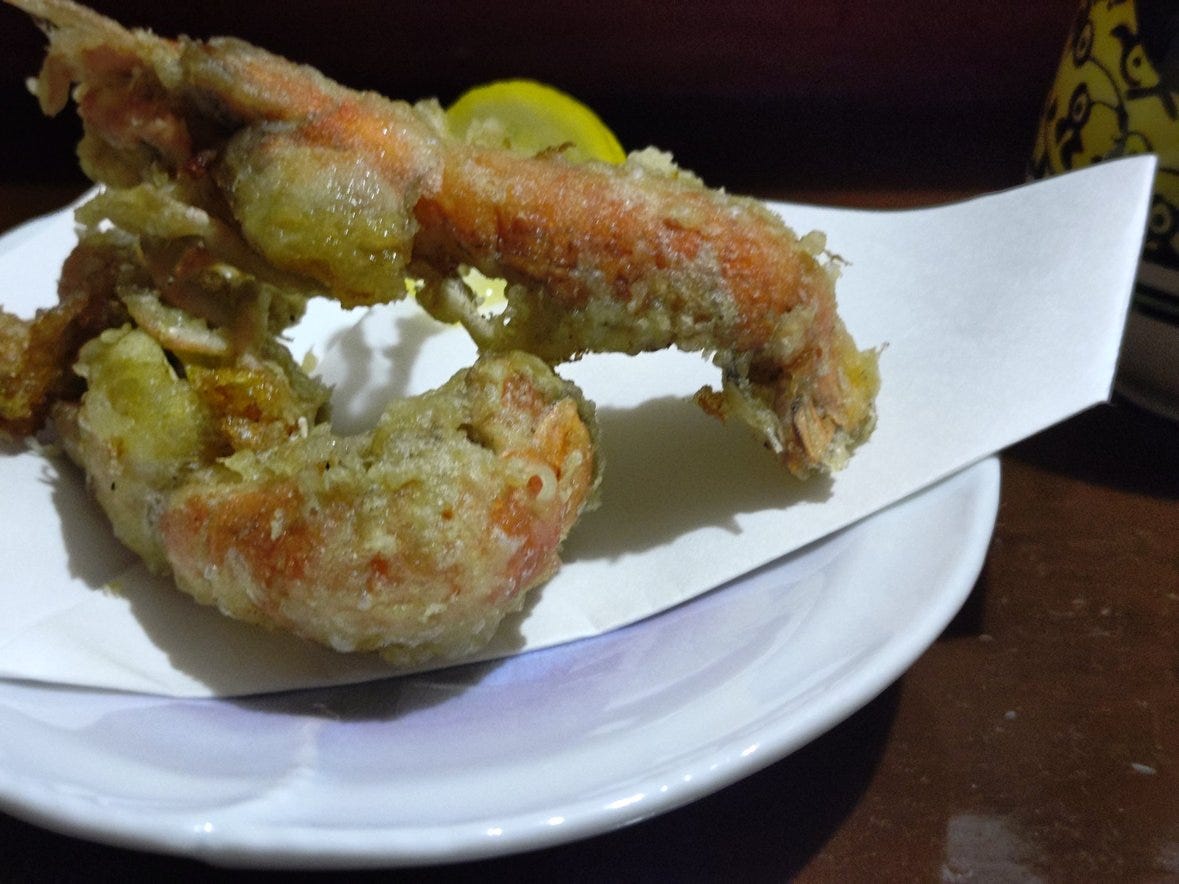
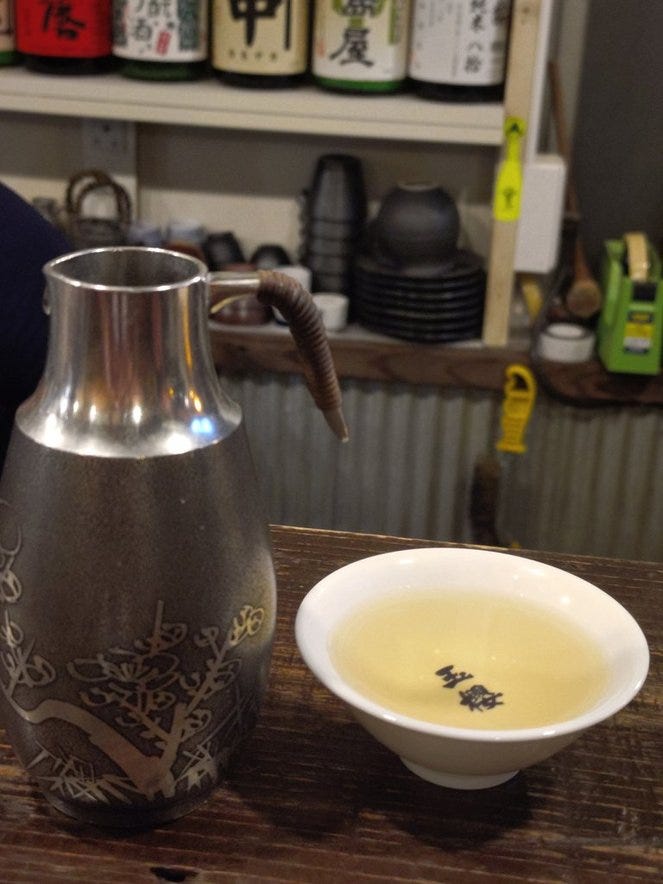

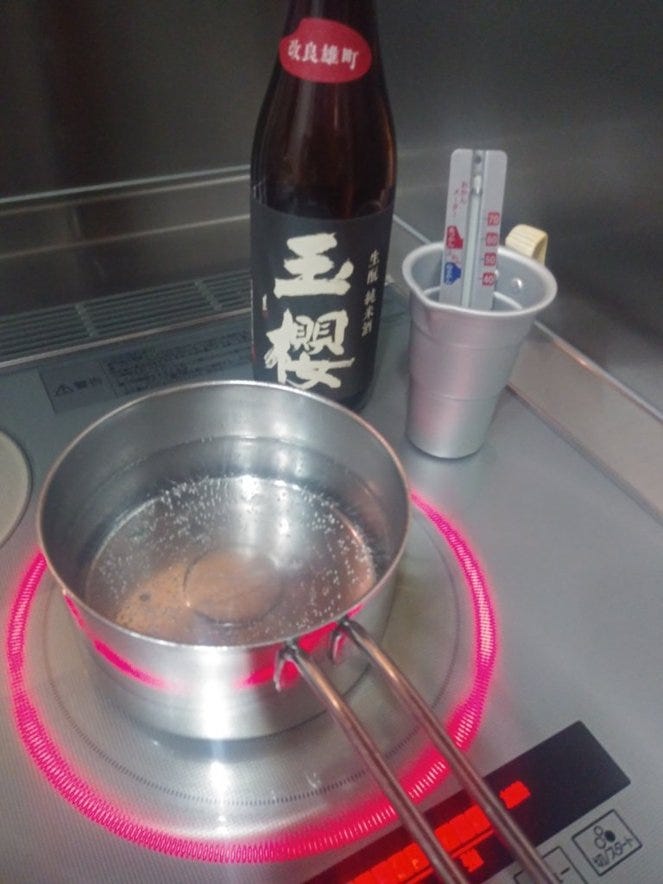

I made my preference before trying. Is it good enough ? Junmai genshu done with Kimoto or Yamahai method
Excellent set of essays Francis!
I've leaned toward chilled or just a wee bit above body temperature (In the hitohada kan range) sakes.
However , I plan to try sipping some of the batch of doburoku I have fermenting now at the higher temperatures.
I think I'll want until we've some -40° weather this winter to try tobikiri kan, I'm sure I'll be most appreciative of the warmth when it's cooler outside.